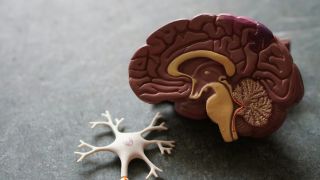SSRIs
The Brain Effects of Therapy, Antidepressants, and Psychedelics
There are different brain mechanisms behind different mental health treatments.
Posted August 10, 2024 Reviewed by Gary Drevitch
Key points
- Psychotherapy, antidepressants, and psychedelics all might bring positive psychological changes, but how?
- Antidepressants help to establish a more balanced neurotransmitter environment for better mood regulation.
- Therapy may alter memory signatures in the brain and inhibit amygdala through increased cortical activation.
- Psychedelics may work by increasing plasticity in the brain, thus "relaxing" prior beliefs and convictions.

When it comes to psychological problems, there are different ways how they can be managed. Talk therapies, such as psychodynamic or cognitive-behavioral therapy, as well as antidepressants like selective serotonin reuptake inhibitors (SSRIs), are effective treatments for mental health disorders [1]. In some cases, psychotherapy may be more effective, while in others, antidepressants might work better. However, combining both approaches generally yields the most positive outcomes [1].
Recently, another potential treatment has emerged: psychedelics, such as psilocybin and LSD. Preliminary results indicate that these substances hold promise as effective treatments [2].
This potential, combined with the mystique surrounding psychedelics and their "forbidden fruit" allure, has generated overwhelming hype. However, research on the effects of psychedelics remains highly ambiguous, and it is too early to draw definitive conclusions [3]. Nonetheless, several studies and personal reports from individuals with depression suggest that psychedelics can have positive effects [4].
Given that these treatments might often yield positive results, you might wonder how they actually work: How do these interventions change our brains?
While the effects and results of these treatments might seem similar on a meta-level, current knowledge suggests that they operate through different brain mechanisms [5]. Before we delve into the details, let me caution you: If you are not particularly into science, you might expect a clear and specific description of the mechanisms underlying these interventions. Yet, and this is quite surprising, for none of these interventions do we have definitive mechanisms to present. So, what I will describe is our current, and limited, understanding.
1. Antidepressants. Generally, antidepressants work by altering the balance of neurotransmitters in the brain, particularly serotonin, norepinephrine, and dopamine [6]. Different types of antidepressants target these neurotransmitters in various ways, and finding the right medication often involves a personalized approach.
A classic example of an antidepressant is SSRIs or selective serotonin reuptake inhibitors. It is believed that depressive symptoms stem from an imbalance or deficiency of certain neurotransmitters, leading to a depressive mood. SSRIs block the reabsorption (reuptake) of serotonin into neurons, thereby making more serotonin available in the brain [7] and changing the mood.
In addition, a recent synthesis of studies suggests that antidepressants might directly target the brain's affective or visceromotor state by altering limbic brain structures involved in generating a negative affective bias [5].
One key structure is the amygdala, which plays a central role in the effects of antidepressants. Changes in the amygdala following antidepressant treatment, particularly with SSRIs, could result from increased serotonin availability at the synapses, leading to amygdala inhibition [5]. This inhibition may contribute to a reduction in negative emotions and an overall improvement in mood.

2. Psychotherapy. Psychotherapy operates under a different set of assumptions than antidepressants. Rather than changing chemical levels directly, psychotherapy aims to influence the cognitive schemas that govern the production of negative emotions and teach individuals to adaptively regulate their moods and thoughts.
There are at least two potential mechanisms of psychotherapy. First, by promoting awareness and adaptive regulation of one's emotions and the thoughts behind them, psychotherapy increases activation in the prefrontal areas of the brain responsible for behavioral control [8].
For instance, by attending to affective feelings, verbalizing them, and working through them, individuals can engage the right ventrolateral prefrontal cortex (rVLPFC) [9]. Increased activation in this region can modulate and inhibit the activity of areas that produce negative moods, such as the amygdala. This mechanism of inhibiting negative emotions through the activation of higher-order regions is a well-established principle of psychotherapy. It is known to be especially involved in techniques like cognitive reappraisal, cognitive restructuring, and mindfulness (reviewed in [8]).
A second mechanism is known as memory reconsolidation or memory "updating." This process suggests that through therapeutic work, the brain's signature of a painful memory can be modified by integrating it with additional cognitive structures, leading to more adaptive meanings for the individual [10].

3. Psychedelics. Psychedelics are the most recent treatment of the three, making it perhaps the most challenging to define their mechanisms of action precisely. Various theories and diverse opinions exist regarding how psychedelics work, but we can try to discern a general understanding on which these theories converge [11].
First, at a biochemical level, it is well-known that one of the fundamental mechanisms of psychedelics involves the stimulation of the 5-HT2A receptor (and other serotonin sub-receptors), leading to increased neuronal activity, altered connectivity between brain regions and enhanced neuroplasticity [11].
In this regard, psychedelics resemble antidepressants as they change the brain chemically. Yet, what sets psychedelics so much apart from antidepressants?
It is believed that psychedelics bring significant flexibility to the brain. This increased activity is hypothesized to lead to entropy or chaos within the brain, disrupting a rigid, habitual patterns of thinking [12]. This heightened neuroplasticity may help to disrupt deeply held maladaptive beliefs (such as "I'm not valuable" or "I'm always alone") and replace them with more adaptive, healthier perspectives. This mechanism is particularly interesting as it suggests that psychedelics could facilitate profound psychological shifts by allowing individuals to break free from entrenched cognitive and emotional patterns.
Moreover, the activity of the default mode network (DMN), which is responsible for high-level aspects of self-referential thinking, might be inhibited, resulting in a reduced sense of self and, sometimes, even ego dissolution [11].
Summary
While different antidepressants may work in different ways, they generally aim to restore a more balanced neurotransmitter environment for better regulation of one’s mood. Psychotherapy enhances awareness and promotes adaptive self-regulation by activating higher-order brain regions and inhibiting limbic structures. It also helps update memory signatures in the brain to alleviate related symptoms. Psychedelics primarily increase brain flexibility by "relaxing" existing constraints, allowing for global changes through synaptic plasticity.
To find a therapist, visit the Psychology Today Therapy Directory.
References
1. Cuijpers, P., Sijbrandij, M., Koole, S. L., Andersson, G., Beekman, A. T., & Reynolds III, C. F. (2013). The efficacy of psychotherapy and pharmacotherapy in treating depressive and anxiety disorders: A meta‐analysis of direct comparisons. World psychiatry, 12(2), 137-148.
2. Daniel, J., & Haberman, M. (2018). Clinical potential of psilocybin as a treatment for mental health conditions. The mental health clinician, 7(1), 24–28. https://doi.org/10.9740/mhc.2017.01.024
3. van Elk, M., & Fried, E. I. (2023). History repeating: guidelines to address common problems in psychedelic science. Therapeutic Advances in Psychopharmacology, 13, 20451253231198466. Chicago
4. Spriggs, M. J., Kettner, H., & Carhart-Harris, R. L. (2021). Positive effects of psychedelics on depression and wellbeing scores in individuals reporting an eating disorder. Eating and Weight Disorders-Studies on Anorexia, Bulimia and Obesity, 26, 1265-1270.
5. Nord, C. L., Barrett, L. F., Lindquist, K. A., Ma, Y., Marwood, L., Satpute, A. B., & Dalgleish, T. (2021). Neural effects of antidepressant medication and psychological treatments: a quantitative synthesis across three meta-analyses. The British Journal of Psychiatry, 219(4), 546-550.
6. Harmer, C. J., Duman, R. S., & Cowen, P. J. (2017). How do antidepressants work? New perspectives for refining future treatment approaches. The Lancet Psychiatry, 4(5), 409-418.
7. Stahl, S. M. (1998). Mechanism of action of serotonin selective reuptake inhibitors: serotonin receptors and pathways mediate therapeutic effects and side effects. Journal of affective disorders, 51(3), 215-235.
8. Messina, I., Sambin, M., Beschoner, P., & Viviani, R. (2016). Changing views of emotion regulation and neurobiological models of the mechanism of action of psychotherapy. Cognitive, Affective, & Behavioral Neuroscience, 16, 571-587.
9. Lieberman, M. D., Eisenberger, N. I., Crockett, M. J., Tom, S. M., Pfeifer, J. H., & Way, B. M. (2007). Putting feelings into words. Psychological science, 18(5), 421-428.
10. Lane, R. D., Ryan, L., Nadel, L., & Greenberg, L. (2015). Memory reconsolidation, emotional arousal, and the process of change in psychotherapy: New insights from brain science. Behavioral and brain sciences, 38, e1.
11. van Elk, M., & Yaden, D. B. (2022). Pharmacological, neural, and psychological mechanisms underlying psychedelics: A critical review. Neuroscience & Biobehavioral Reviews, 140, 104793.
12. Carhart-Harris, R. L., & Friston, K. J. (2019). REBUS and the anarchic brain: toward a unified model of the brain action of psychedelics. Pharmacological reviews, 71(3), 316-344.




